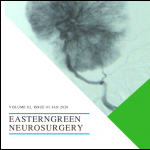Predictors and Significance of Orbital Fracture in Traumatic Brain Injury
DOI:
https://doi.org/10.3126/egn.v2i1.27456Keywords:
visual manifestation, traumatic brain injury, Orbital fractureAbstract
Background and purpose: Orbital manifestation in traumatic brain injury though uncommon, is one of the major complications of traumatic brain injury that has to be addressed judiciously to prevent permanent visual loss.
Material and Methods: 211 patients who underwent CT for traumatic brain injury in between September to December 2019 were prospectively examined for the orbital manifestation. Patients who had undergone CT head including orbit with 3D face RECON were only included in our study to remove the bias between fracture line and suture in plain CT scan. CT imaging was evaluated to identify and subtype the orbital fracture.
Results: Total number of patients was 28, with mean age of 33.82 (SD 17.15) years. Majority of the patients were male which accounted 79% of sample size. There was 78% mild head injury followed by 18% and 4% moderate and severe head injury respectively. The most common type involved among all were blow out fracture and lateral orbital wall fracture. Clinically vision was abnormally around 21% of the cases, abnormal papillary reaction was seen in 25% of the cases around 93% of the cases had raccoon eye at the time of presentation. There was proptosis in around 14% of the patients and subconjunctival hemorrhage was seen in around 93% of the cases. Around 79% of the patients had intact vision at the time of presentation and 3.6% of the patients improved their vision during the course of treatment. Complete globe disruption who required evisceration of the eyeball was 10.7% and those who had abnormal vision at the time of presentation, 7.1% that did not improve their vision.
Conclusions: orbital manifestations with either type of orbital fracture in traumatic brain injury are useful for the prediction of severity of orbital injury and its clinical outcome. This helps to identify patients in high risk and start early treatment to prevent permanent visual loss.




